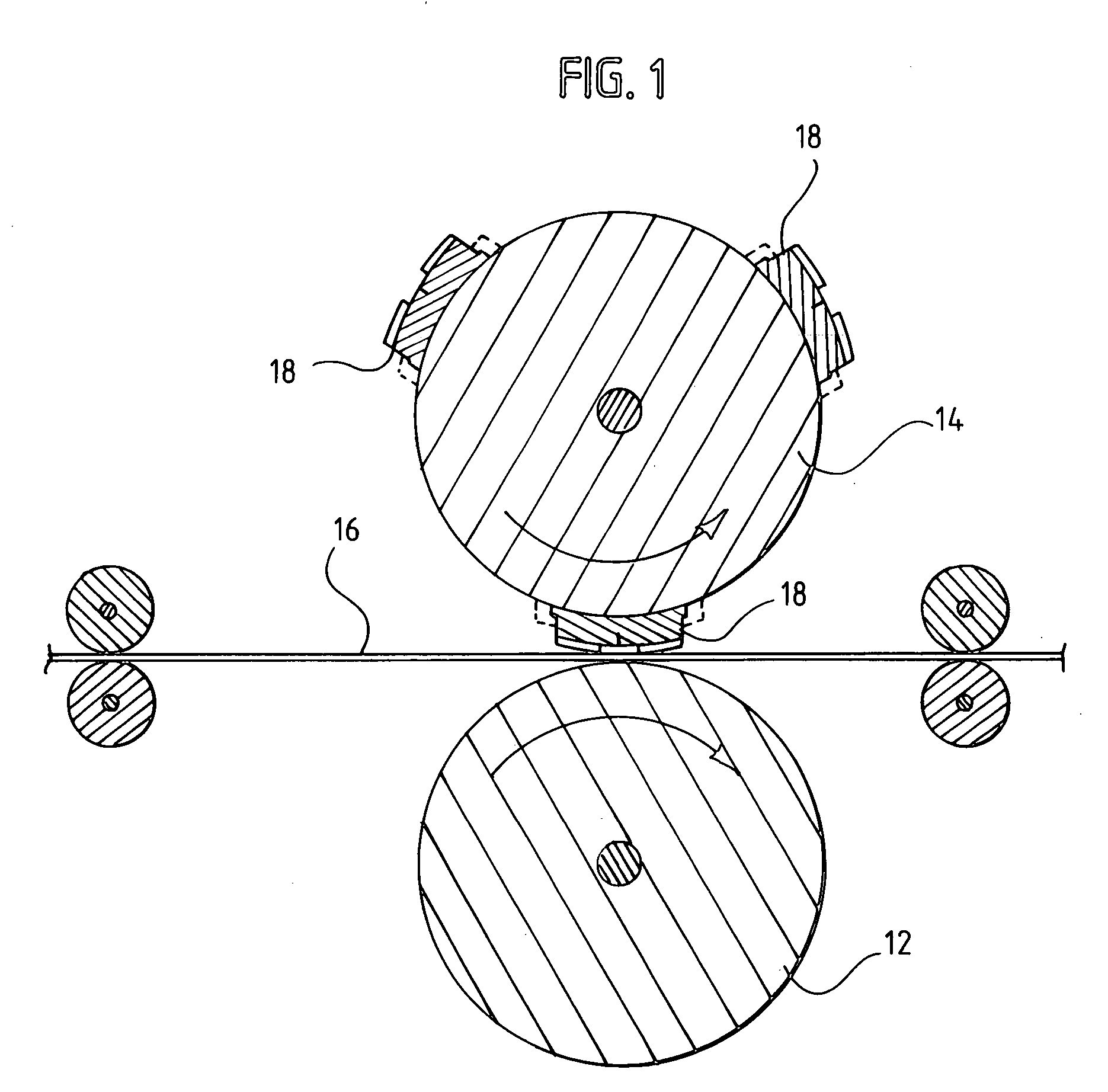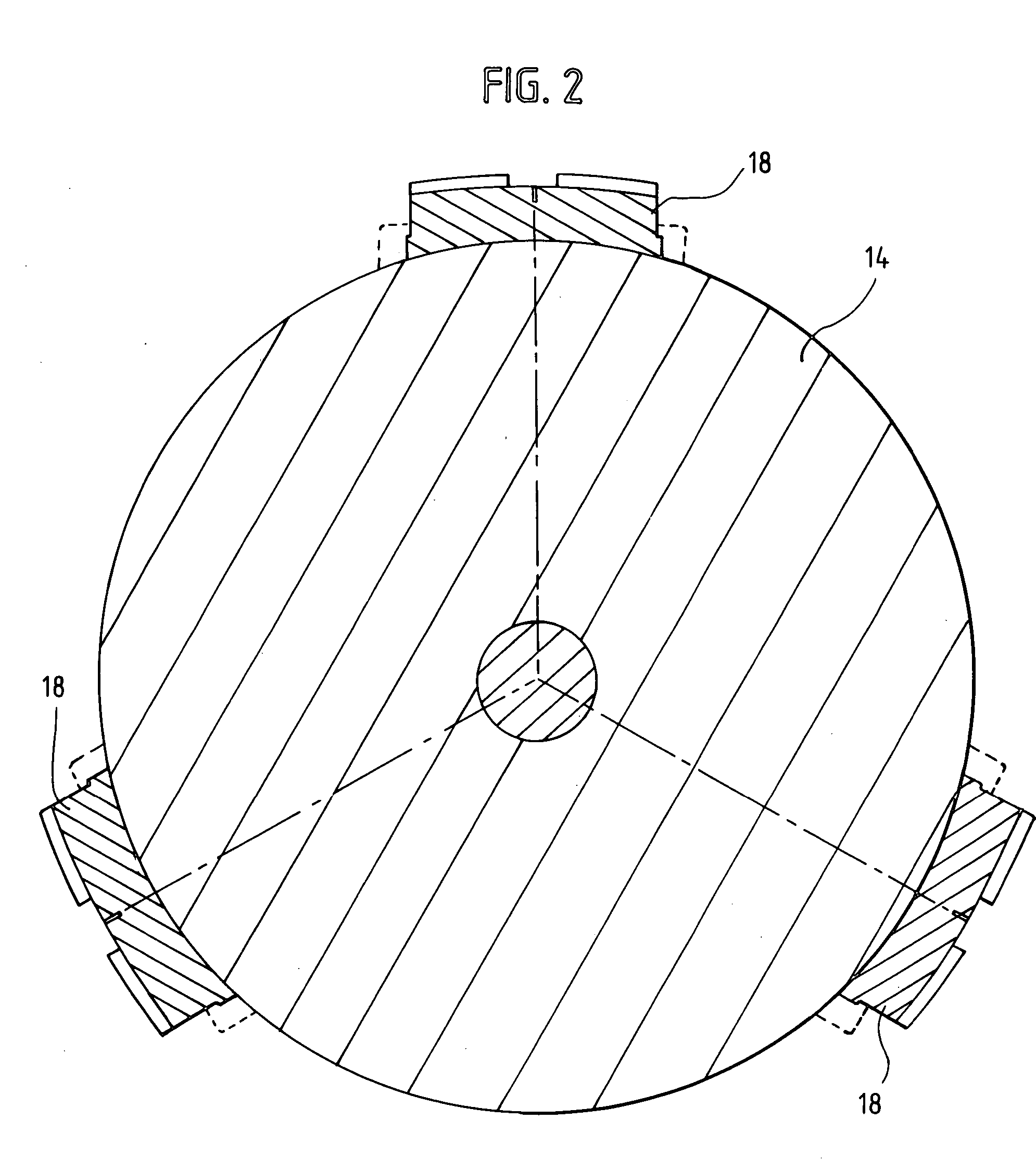Rotary web cutting system with resilient mounting assembly for shaped knife blades
a technology of resilient mounting and shaped knife blades, which is applied in the field of improved blades, can solve the problems of uneven blade wear, inability to effectively employ curved or contoured cutting blades, and inability to effectively cut contoured edges or otherwis
- Summary
- Abstract
- Description
- Claims
- Application Information
AI Technical Summary
Benefits of technology
Problems solved by technology
Method used
Image
Examples
Embodiment Construction
)
[0027] Turning first to FIG. 1 of the drawings, a knife roller 14 is shown adjacent to and above an anvil roller 12 with a web 16 between the rollers. These rollers rotate in relationship to one another about parallel axes, as shown by the directional arrows. The knife roller 14 and anvil roller 12 are arranged so that web 16 is passed between them. The web 16 can be severed at the desired places by action of the knife units 18, against the anvil roller 12.
[0028] Rollers 12 and 14 can be positioned in reverse configuration in some conditions and can be offset from each other in separate normal vertical planes. An offset allows for better product control as the web is cut and delivered from the cylinders. The preferred degree of offset is in the range of about 5 degrees to 15 degrees to the side of the anvil roller.
[0029] A plurality of knife blade units 18 is also shown in FIG. 1. As shown in FIG. 1 and more specifically in FIG. 2, all of the knife units 18 are substantially iden...
PUM
| Property | Measurement | Unit |
|---|---|---|
| degree angles | aaaaa | aaaaa |
| length | aaaaa | aaaaa |
| width | aaaaa | aaaaa |
Abstract
Description
Claims
Application Information
 Login to View More
Login to View More - R&D
- Intellectual Property
- Life Sciences
- Materials
- Tech Scout
- Unparalleled Data Quality
- Higher Quality Content
- 60% Fewer Hallucinations
Browse by: Latest US Patents, China's latest patents, Technical Efficacy Thesaurus, Application Domain, Technology Topic, Popular Technical Reports.
© 2025 PatSnap. All rights reserved.Legal|Privacy policy|Modern Slavery Act Transparency Statement|Sitemap|About US| Contact US: help@patsnap.com



